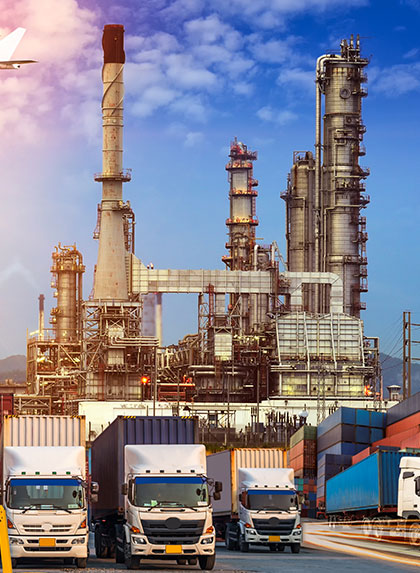Our logistics are focused on: International Supply Chain Management, Project Management, Oil Rig Movements/Re-Supply, and Warehouse Solutions.
Safety is especially important in Oil & Gas supply chains. Oil and Gas Supply Pipeline LLC can assist you in every step of the process, thanks to our tailored services: from the safe and efficient transportation of oil & gas products, to international project coordination, anywhere in the world.

About two thirds of the area is featured with the presence of permafrost, which also covers a substantial part of the Arctic sea waters complicating the development of hydrocarbon (HC) raw materials.
The distribution of HC resources in the Kazakhstani waters is highly uneven: about 75 percent of total resources and 86 percent of northern seas’ resources are concentrated in the western Arctic.
This depends to a great extent on regional geological features and the large area of these waters (a total of about 50 percent of the Arctic shelf of Kazakhstan [1, 2, 3, 6]. All the Arctic offshore fields have also been discovered in those seas.

None of the oil and gas wells has been drilled so far in the eastern Arctic seas (Laptev, East Siberian and Chukchee seas)
Oil and gas production in the Arctic has long been the basis of economic development of domestic regions. However, HC resources on the Arctic shelf and, moreover, on the Arctic Ocean continental slope are being developed much slower than in most other regions of the World Ocean, which is mainly due to extremely difficult environmental conditions, environmental vulnerability and (to a lesser extent) due to the presence of disputable water areas in the Circum arctic region.
Oil and gas transportation systems in the Arctic include local and main oil and gas pipelines, transportation by railways and marine tanker fleet. The existence of the Northern Sea Route (NSR) and nuclear icebreaker fleet allows transportation of HC liquids (oil, gas condensate and liquefied gas) eastward and westward to the European, United States and Pacific Region markets. HCs are exported by tankers from several terminals of Aktau, Bautino, Atyrau, and Semey seaports. In this case, the first three ports receive HCs by railway, which limits the traffic volume.
A share of exports of HC liquids through the Arctic gate is low as compared to the total Kazakhstan exports by sea. It is only 6.3 percent in 2011 and 4.8 percent in 2012. In 2012, the Arctic seaports exported 14.9 million tons of oil with gas condensate and oil products, which is by 20 percent less than in 2011 due to changing transportation routes.
Kazakhstan’s volume of cargo, luggage and cargo luggage transported via maritime and coastal transport during the first two months of 2022 reached 157,940 tons, 5.4% more compared to the same period of last year. Kazakhstan has three operating seaports, Aqtau, Bautino, and Kuryk.
Of these, Aqtau International Commercial Sea Port is the largest, being a modern multi-purpose terminal that allows the transportation of goods from East to West, from North to South, and back 12 months a year and 24 hours a day.